ARBOREA MAGNA
ARBOREA MAGNA
ARBOREA MAGNA

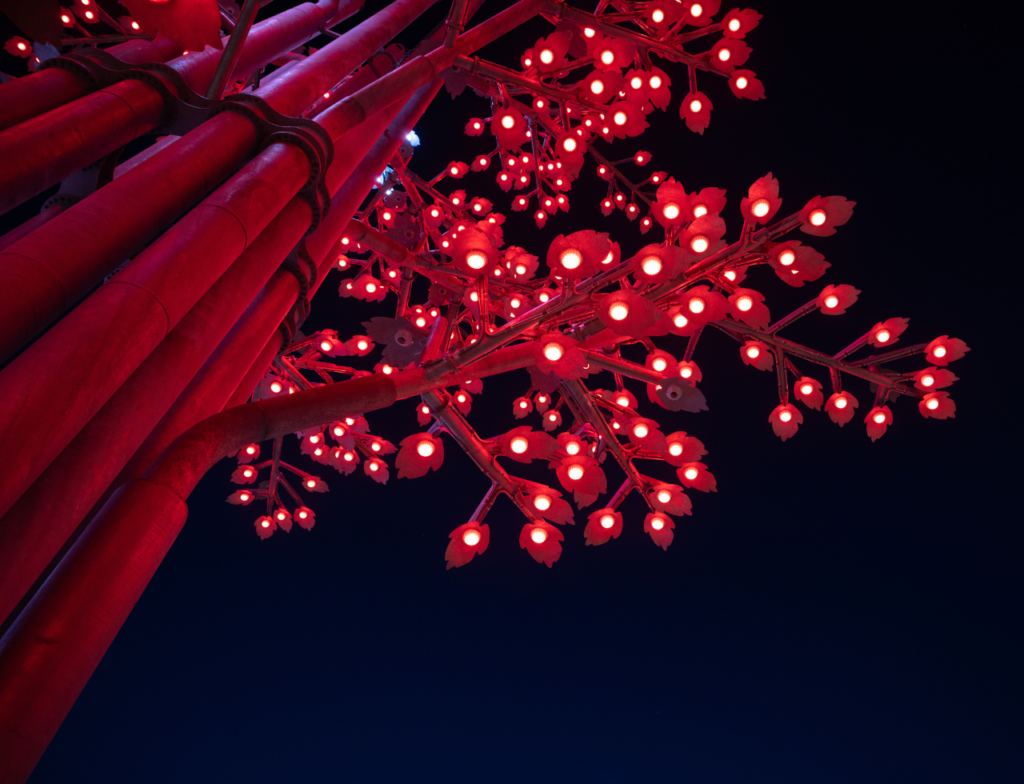
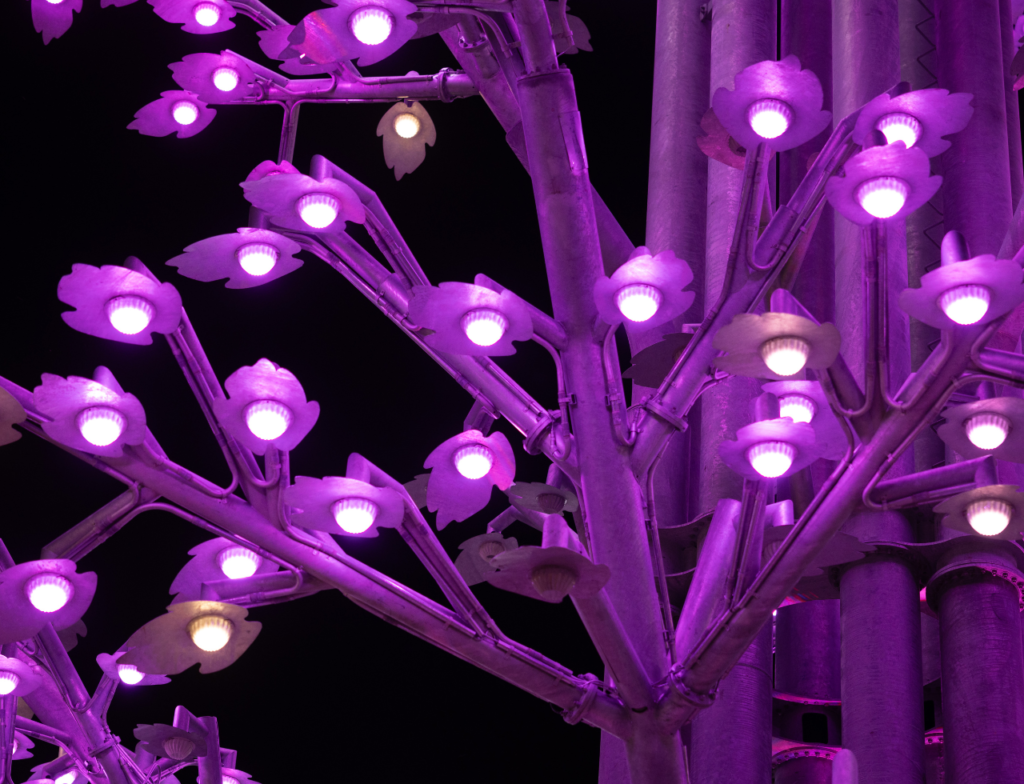
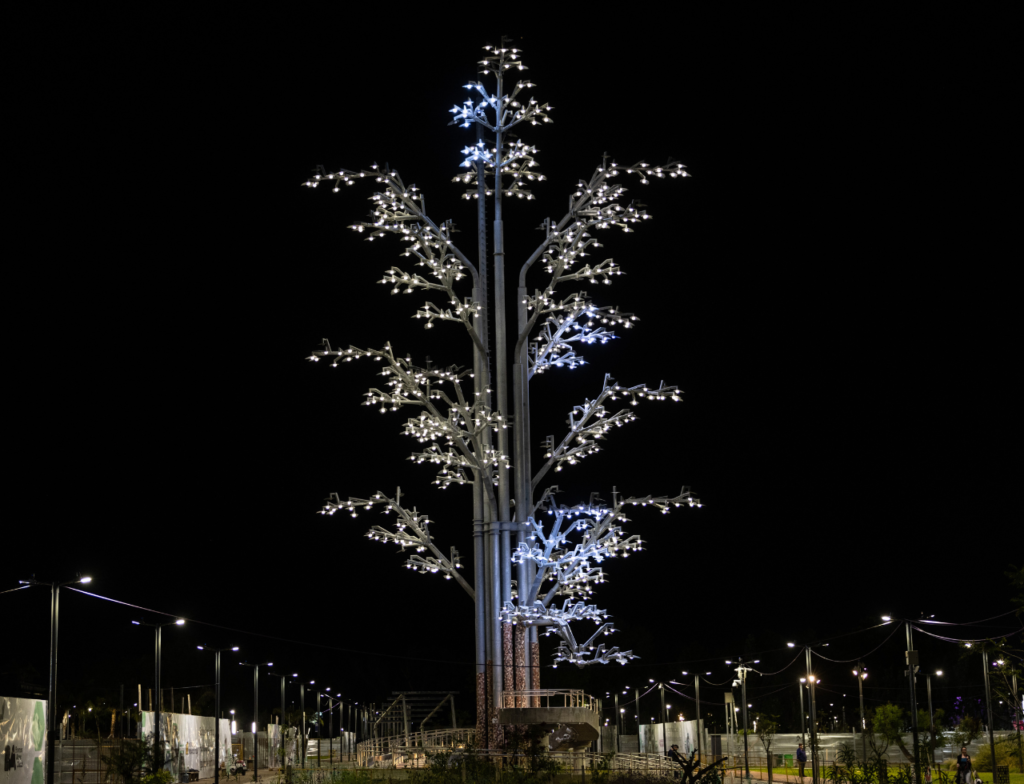
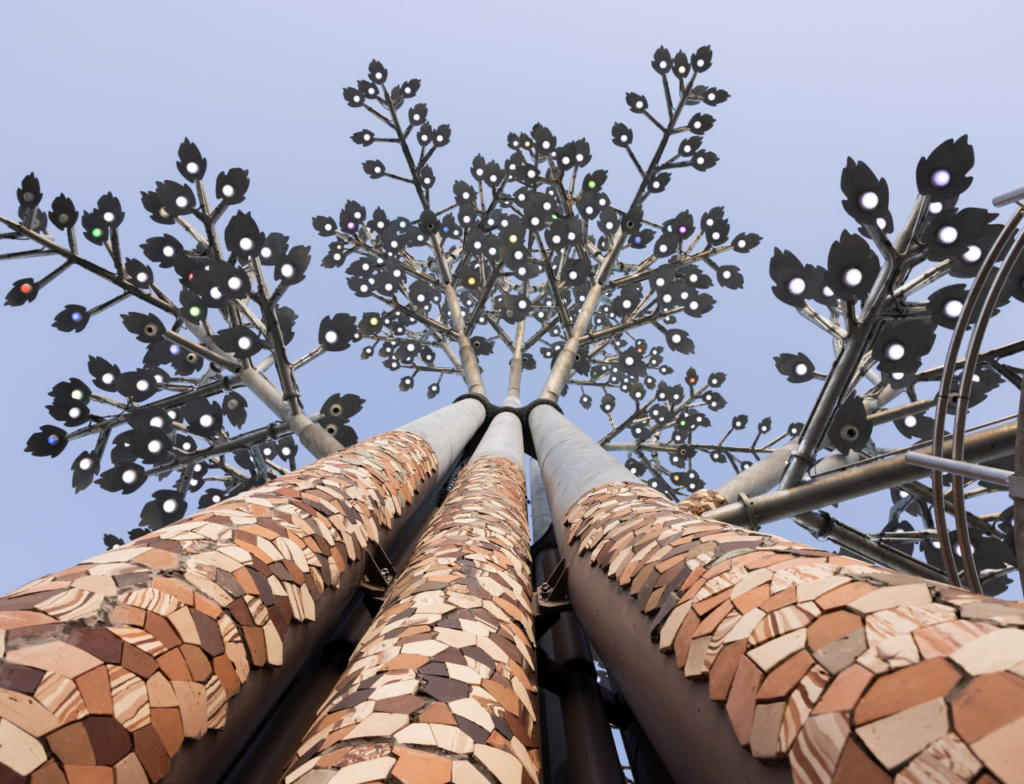

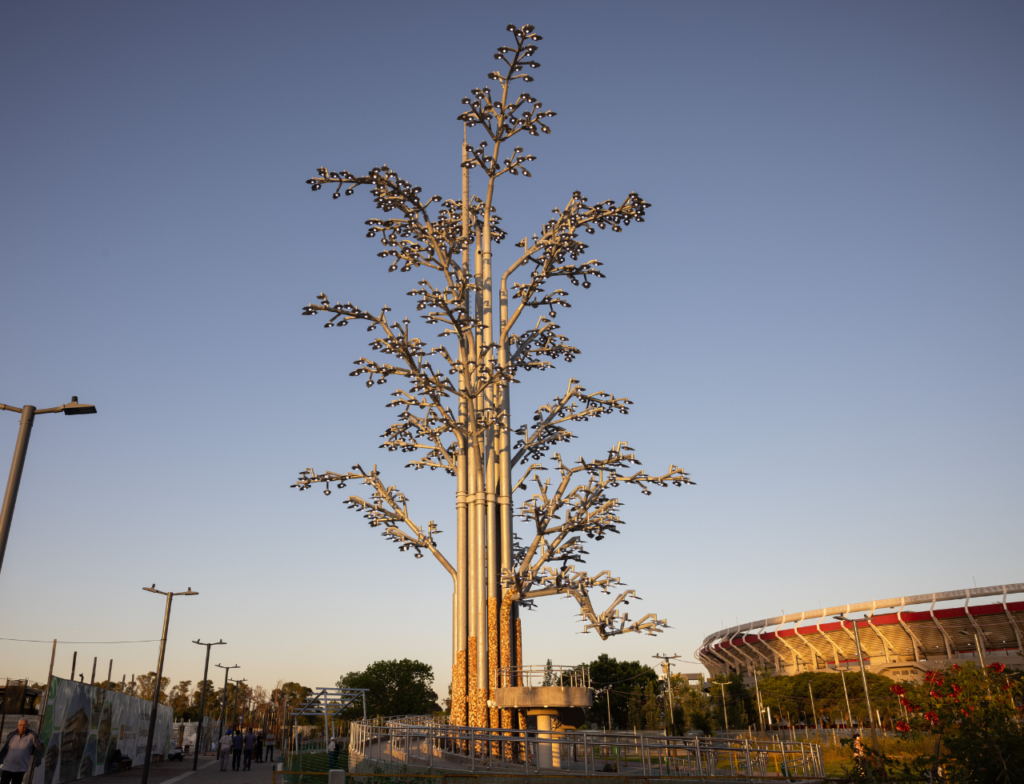
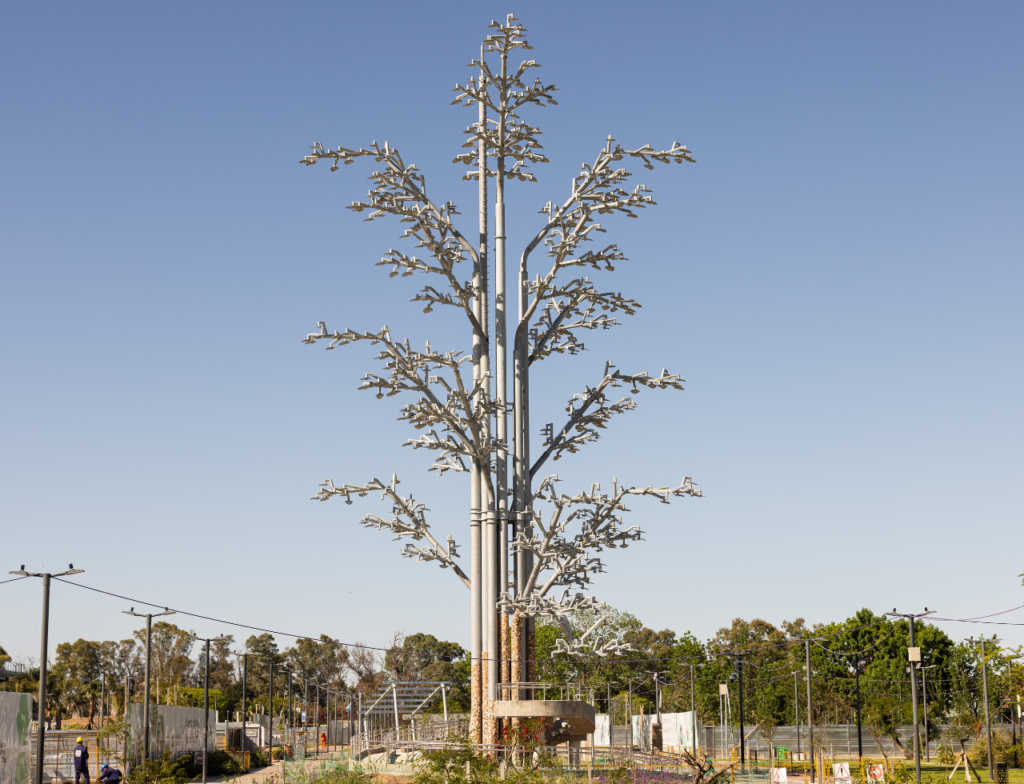
Arborea Magna is distinguished by its intricate lighting system, designed specifically by architect and lighting design expert Eli Sirlin. Featuring a highly innovative approach, the sculpture’s trunk extends into branch terminations with over 750 dynamic, illuminated, and playful leaves that enhance the artwork’s visibility both day and night. This impressive sculpture seamlessly integrates into the Innovation Park, engaging in a harmonious dialogue with its surroundings and aligning with the innovative spirit of science and technology.
The Government of the City of Buenos Aires, together with the Innovation Park, presents Arbórea Magna by Argentine artist Nicola Costantino (Rosario, 1968), a new piece of public art that will become part of the cultural heritage for all residents and visitors of Buenos Aires. This monumental sculpture, which won the Ideas Competition held in 2022, will be incorporated into the Innovation Park as a new space for gathering and reflection.
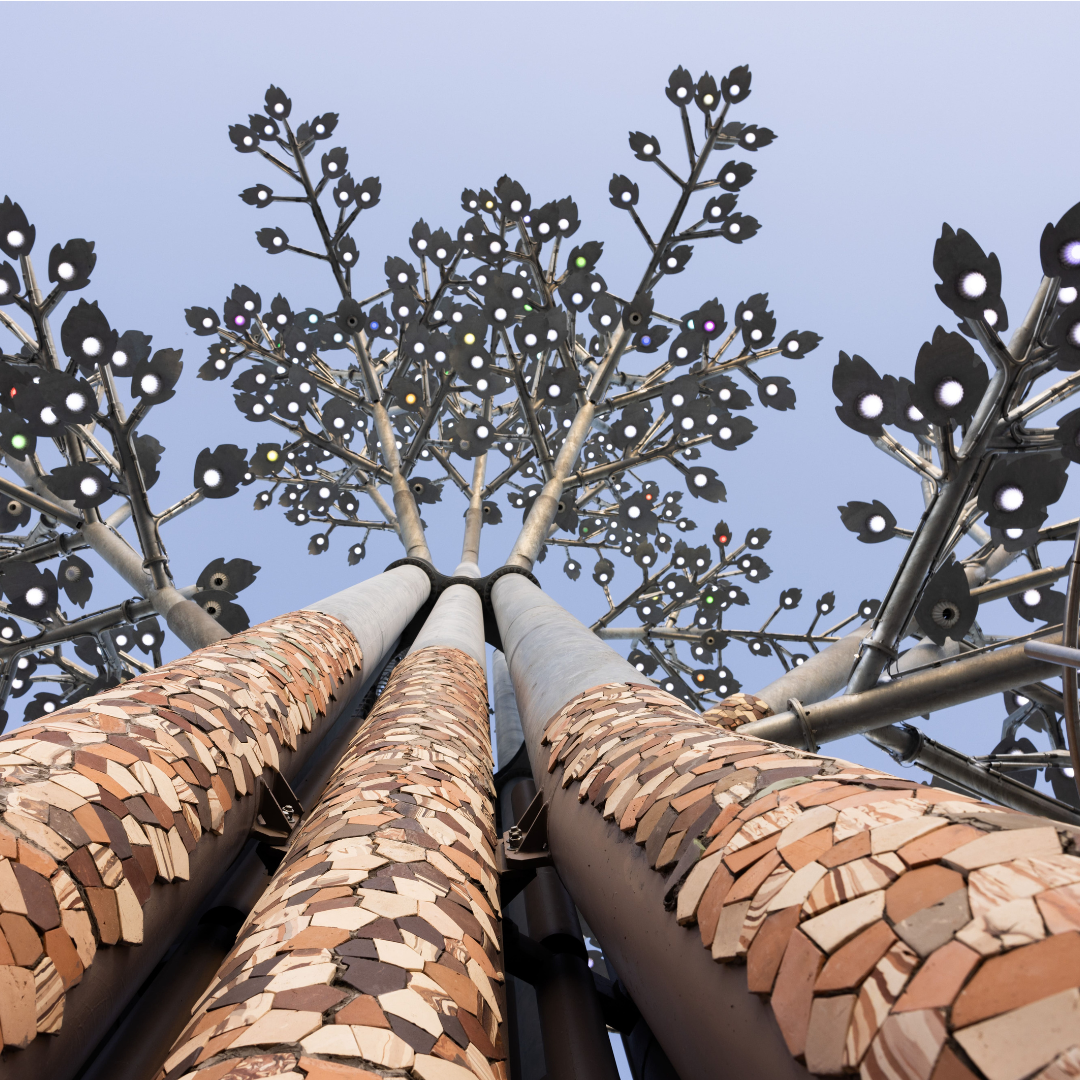

Arborea Magna is a public art installation situated in the central corridor of the Innovation Park. It serves as a tribute to all the trees of the universe and invites reflection on the relationship between humanity and nature, both now and for future generations.
The term "Arbórea" signifies "tree-like in shape or appearance." Although the sculpture mimics the formal appearance of a tree, it is not intended to document a specific species but rather to honor the diverse plant universe. The term "Magna" in the title highlights the sculpture's monumental scale, which significantly surpasses human dimensions and is designed to be visible from afar.The term "Arbórea" signifies "tree-like in shape or appearance." Although the sculpture mimics the formal appearance of a tree, it is not intended to document a specific species but rather to honor the diverse plant universe. The term "Magna" in the title highlights the sculpture's monumental scale, which significantly surpasses human dimensions and is designed to be visible from afar.
The sculpture rises above an artificial water pond, supported by a 34-meter-high galvanized iron structure. This industrial and cold support creates a striking contrast with the ceramic Nerikomi technique introduced by Costantino, marking a unique contribution to the public art landscape of the City.
An ancestral technique is introduced to contemporary art.
The ceramic elements, crafted using the Nerikomi technique in the artist's workshop, adorn much of the trunk with natural patterns that mimic tree bark. Curved pathways guide visitors to a vantage point where they can pause to appreciate the intricacy of the technique, the details of the depicted vegetation, and its textures.
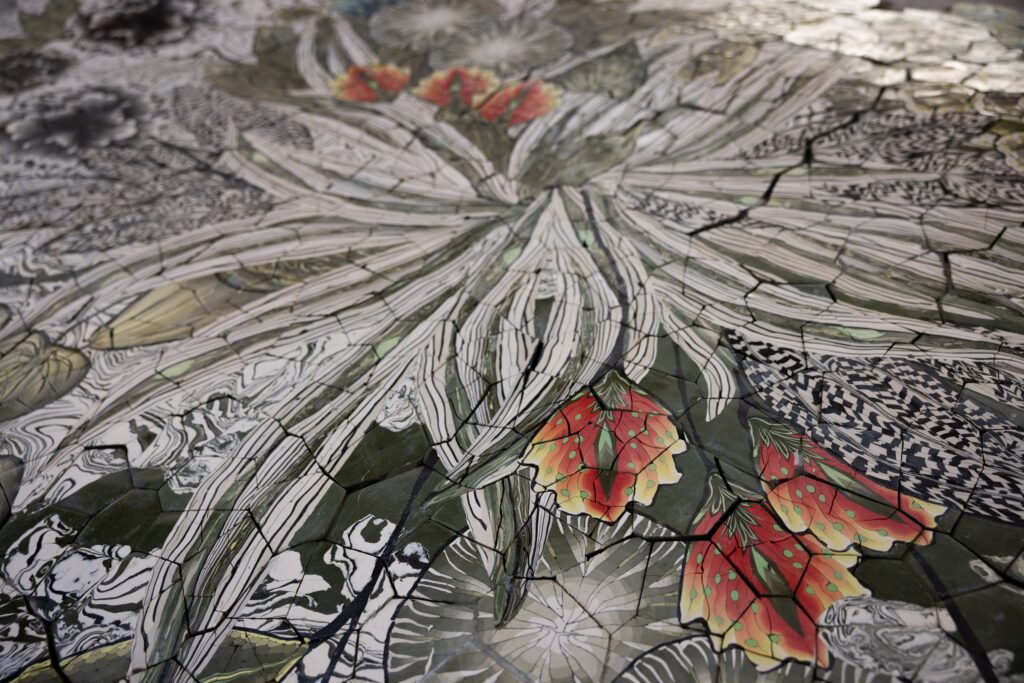
“Today, I want to stop time and capture the beauty that emerges from colored clays, using an ancient technique unmatched by any modern material. Nature silently reclaims what belongs to it; if we are not part of that, we will not be part of what endures.”
Nicola Costantino
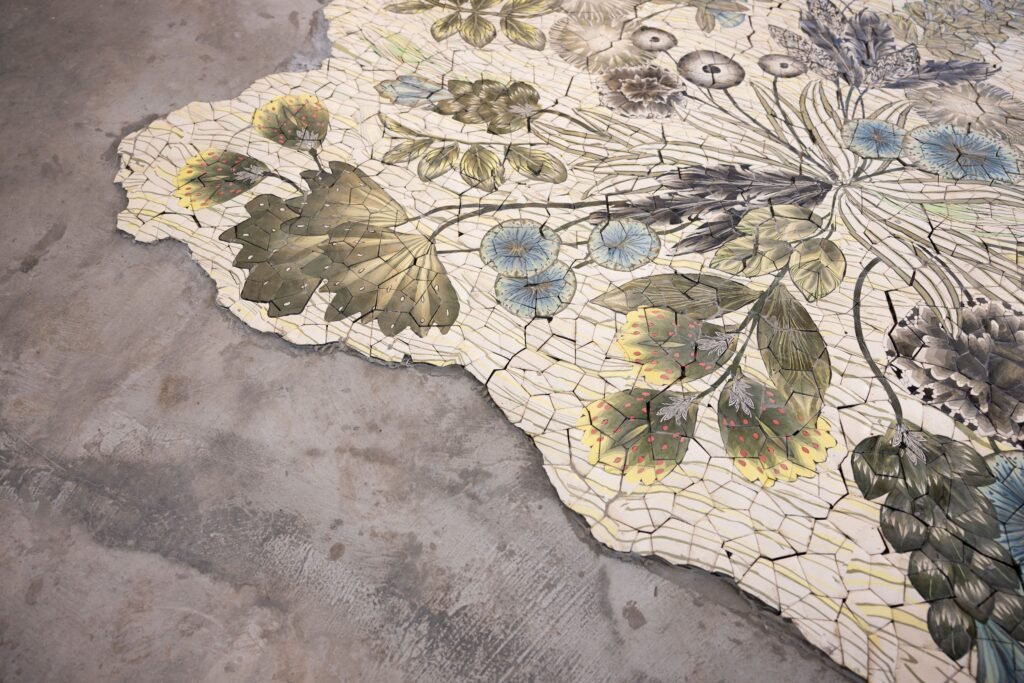
“Today, I want to stop time and capture the beauty that emerges from colored clays, using an ancient technique unmatched by any modern material. Nature silently reclaims what belongs to it; if we are not part of that, we will not be part of what endures.”
Nicola Costantino

“Today, I want to stop time and capture the beauty that emerges from colored clays, using an ancient technique unmatched by any modern material. Nature silently reclaims what belongs to it; if we are not part of that, we will not be part of what endures.”
Nicola Costantino

“Today, I want to stop time and capture the beauty that emerges from colored clays, using an ancient technique unmatched by any modern material. Nature silently reclaims what belongs to it; if we are not part of that, we will not be part of what endures.”
Nicola Costantino

“Today, I want to stop time and capture the beauty that emerges from colored clays, using an ancient technique unmatched by any modern material. Nature silently reclaims what belongs to it; if we are not part of that, we will not be part of what endures.”
Nicola Costantino

“Today, I want to stop time and capture the beauty that emerges from colored clays, using an ancient technique unmatched by any modern material. Nature silently reclaims what belongs to it; if we are not part of that, we will not be part of what endures.”
Nicola Costantino
Arbórea Magna allows visitors to enjoy a unique experience in the city, while at the same time it seeks to produce a symbolic impact and raise questions in those who visit it. The public will thus be able to raise a sensitivity towards nature and awaken various reflections on science, technological advances and the link with the environment.
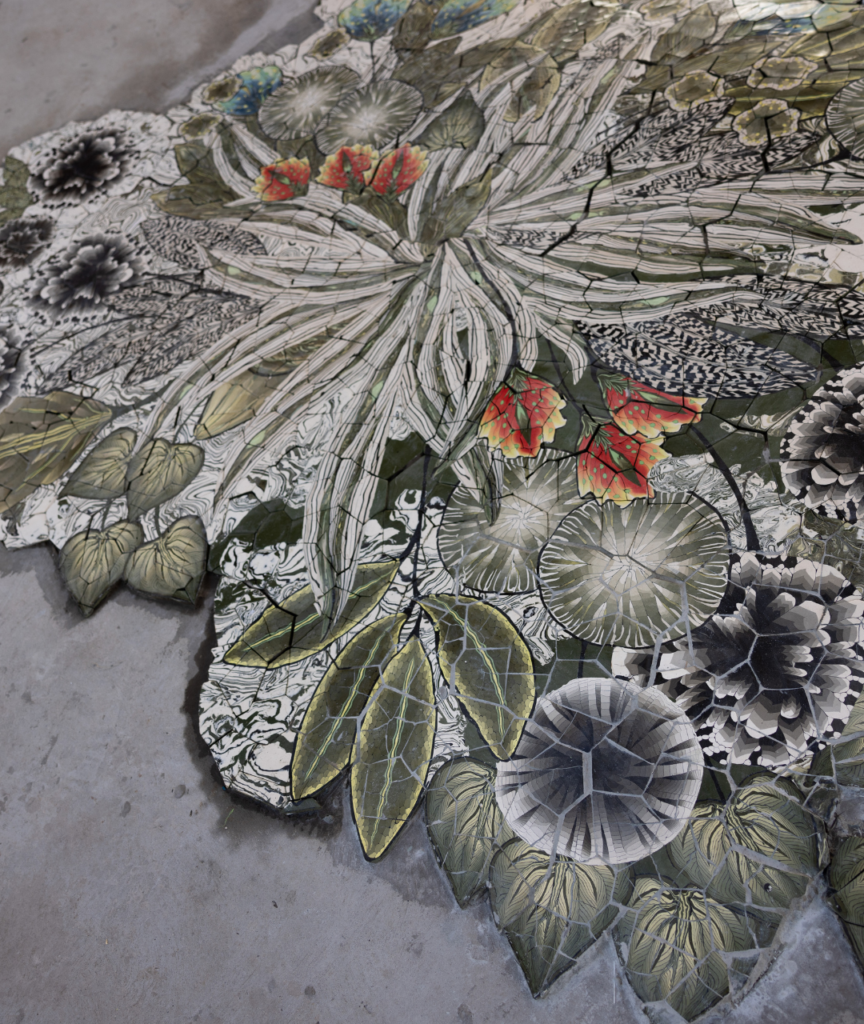
About Nerikomi ceramics
“Ceramics make me feel connected to both the past and the future because it is crafted to endure for eternity. I will continue with this technique that predates me and will persist after I’m gone. Through ceramics, I become time.” Costantino.
The creative process of Nicola Costantino's ceramic art, realized in a collaborative and sustainable way, rescues an ancestral wisdom for the contemporary. The Japanese technique Nerikomi arranges the pigmented clay vertically in a block, in gradient colors, or interspersed.
Costantino does not graphically intervene in her ceramic pieces; the patterns emerge from the fragmentation of the material, with an inherent randomness characteristic of the technique that the artist envisions while forming the block, becoming visible only at the final cutting stage. The ceramic bark presents an alternative way of conceptualizing natural patterns, as the pieces are combined like a puzzle on the surface that gradually curves.
The social value of the work resides in the collaboration that has been implemented, for example in the realization of the sculpture's bark, which has the collaboration of the students of the Ceramics School No. 1, of the City of Buenos Aires.
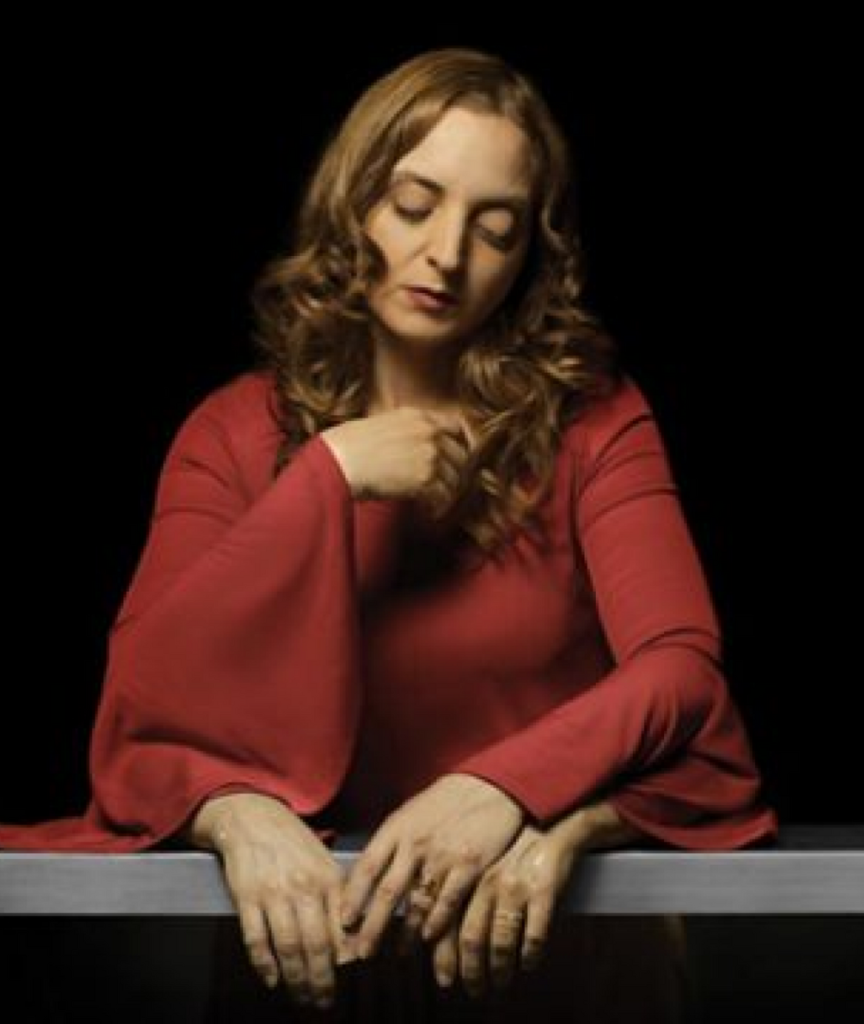
Nicola Costantino
Nicola Costantino was born in Rosario in 1964 and currently lives and works in Buenos Aires. A trained sculptor, her pieces combine acute beauty with a challenging discomfort. Food has been a recurring theme in her work since her early pieces and reappears in her work inspired by The Garden of Earthly Delights by Hieronymus Bosch. Her piece Cochon sur canapé (1992) is considered a precursor to Latin American contemporary art. In 1998, she represented Argentina at the São Paulo Biennale, and since then, she has participated in numerous exhibitions at museums around the world, including in Liverpool (1999), Tel Aviv (2002), and Zurich (2011).
In 2000, she held a solo exhibition at Deitch Projects (New York), and her Corset de peletería humana was acquired by the MoMA. In 2004, she presented Animal Motion Planet and Savon de Corps. Starting in 2006, she entered the world of photography, creating over 30 works with a strong focus on her own presence. During this period, she created her first video, the self-referential work Tráiler (2010), and portrayed iconic women such as Eva Perón in Rapsodia Inconclusa (55th Venice Biennale, 2013). During the pandemic, the artist explored the Japanese technique known as neriage nerikomi, developing it through various exhibition projects, including PaRDeS, the garden of suspended time at Fundación Santander (2023). In October 2023, she premiered Artista Ex Machina, her first theatrical work, at the Centro Experimental of Colón Theatre.
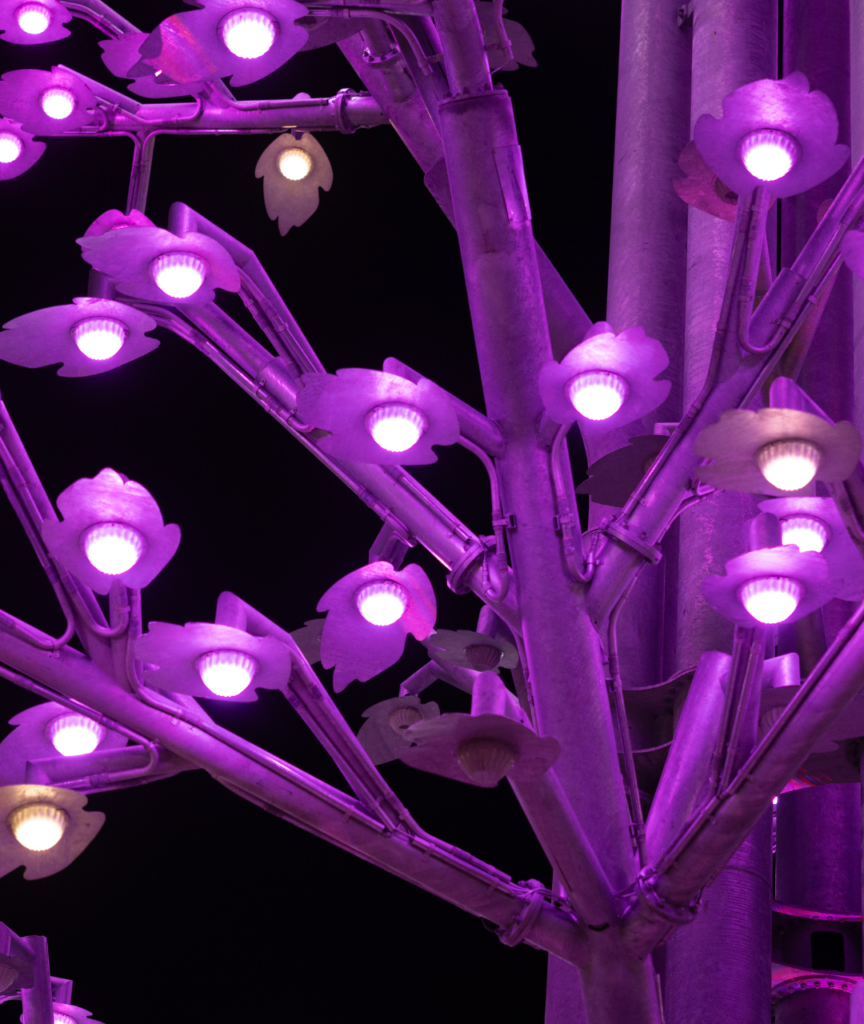
On the illumination of Arborea Magna
The lighting in Arborea Magna enhances the expressive qualities of the sculpture. It serves both symbolic and meaningful functions, allowing for the creation of various scenarios and atmospheres for visitors. In this instance, the system was developed in collaboration with Eli Sirlin, a lighting designer and architect, who introduced innovation by creating a technology specifically designed for the automation and programming of one or multiple lighting scenarios.
Artist:Nicola Costantino
Artistic production:Project Office
Lighting design:Architect Eli Sirlin
Lighting systems and products:Signify Argentina S.A
Construction design project:Habitar Sustentable
Executive construction specialized in metallic structures:NH Group
Collaborations:Ceramics School No. 1, of the City of Buenos Aires.
Ceramists and Artisans:Nicola Costantino Studio
GUIDED TOURS
GUIDED TOURS
GUIDED TOURS
Visitors will be able to enjoy free tours for the general public. A proposal by Evelyn Marquez, teacher and Bachelor’s in Art and Culture, offers an in-depth and engaging exploration of the monumental sculpture and the various attractions of the Innovation Park.
Downloadable didactic booklets
Designed for children aged 5-12, these booklets are available for online download and are intended for use in classrooms and at home. They aim to spark interest in Arbórea Magna from a playful and accessible perspective, encouraging various reflections and facilitating new learning experiences. The material promotes intergenerational and diverse engagement. The pedagogical content was created by Laura Ferreiros, who holds a degree in Visual Arts with a focus on Sculpture from UNA, as well as a National Master of Ceramics and a Specialist in Education through Art.
INFORMATION
INFORMATION
TO VISITORS
Opening hours
Monday to Sunday (and holidays): The public art sculpture work allows for 24-hour pedestrian circulation.
To see Arborea Magna illuminated: daily at dusk, the lights are turned on and remain on until 10 p.m. (In the winter it usually starts around 6.30 p.m. and in the summer from 7.30 p.m.).
How to get to the park?
- By bus: 15, 28, 29, 42, 107, 130 (circulating on Libertador or Udaondo)
- By train: Belgrano Norte (near the property) and Mitre (800 meters away).
- By subway: D, Congreso de Tucumán stop (15 blocks)
- By car: You can park freely on Ernesto A. Bavio Street as well as on Campos Salles Street.
- Nearby private parking lots: Guayra 1528, 3 de Febrero 3446 and Montañeses 2724.
How to get to Arbórea Magna from the pedestrian entrances to the Park?
- From Campo Salles: once you have entered, make sure you have the +54LAB building on your left and walk in the direction of Udaondo Avenue, so that you will find the main corridor where you will find Arbórea Magna.
- From Av. Guillermo Udaondo: once you have entered, try to have the Immersivity Center (CDI) on your right and walk in the direction of Campo Salles, passing through Udaondo Square, to find the main corridor where you will find Arbórea Magna.
- From Ernesto A. Bavio: walk along the main corridor in the direction of Lugones Avenue until you come to Arbórea Magna, in the corridor.
- In addition, you can approach using the electric bus: Approach the main corridor and get off the vehicle once at Udaondo Square.
Suggestions for making the most of your visit to Arborea Magna
- Minors must always be accompanied by a responsible adult.
- The ramp allows two-way traffic; please enter and drive on the right side.
- Food consumption is not permitted at the sculpture itself but is allowed in the surrounding area.
- Climbing on the railings or entering the pond is prohibited.
- Graffiti and painting on public artwork is strictly forbidden.
Accessibility
- The site features level access, an accessible circuit, and a ramp. There is also a rest area and guided tours available. Please note that accessible restrooms are not provided.
- The ramp is accessible for individuals with mobility disabilities, but the viewpoint is only reachable by stairs due to the steep slope.

